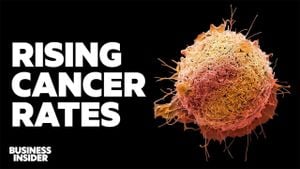Pregnancy is typically regarded as one of the most joyous times in life, bringing excitement and anticipation. But for some women, this period is marred by unexpected challenges, such as receiving a cancer diagnosis. While cancer during pregnancy is relatively uncommon, its incidents have shown signs of increase, particularly in certain corners of the world, including Australia. This unexpected combination of events has left many to ponder the alarming trend and seek answers from medical experts.
Researchers have noted significant developments over the years. A recent investigation from New South Wales highlighted the statistics surrounding such diagnoses. Back in 1994, the incidence of cancers diagnosed during pregnancy or within one year after birth was around 94 cases per 100,000 women giving birth. Fast forward to 2013, and this number had jumped to approximately 163 per 100,000. Although this data might seem dated, it remains some of the most rigorous information available from Australia.
Further corroboration came from Sweden, where another comprehensive study tracked pregnancies from 1973 to 2017, yielding similarly alarming results. Interestingly, these analyses revealed about one-quarter of cancer cases associated with pregnancy were diagnosed before the birth, leaving the remaining diagnosed within the first year post-delivery.
But what types of cancers are we talking about? The United Kingdom conducted its first extensive assessment of pregnancy-related cancers covering the period from 2016 to 2020. Findings revealed breast and skin cancers, particularly melanoma, emerged as the most prevalent forms. Other notable mentions included thyroid, gynecological (especially cervical and ovarian), and specific blood cancers. The UK study also illustrated about 92% were new diagnoses, with around 82% presenting with symptoms recognizable to the mother. Most patients (about 81%) received treatments aimed explicitly at curing the disease. Encouraging news came through the statistics indicating roughly 82% of pregnancies associated with such diagnoses resulted in live births, though about 20% of the mothers did succumb to their illnesses by the end of the five-year period analyzed.
Among the various challenges posed by these cancers, gastrointestinal cancers stood out with concerning statistics, showing the highest mortality rate — approximately 46%. The symptoms associated with these cancers, like abdominal pain and fatigue, often misled women and medical professionals alike, mistaking them for standard pregnancy discomforts. This unfortunate overlap can lead to delays, complicate diagnoses, and worsen prognoses.
So, what is driving the rising cancer rates among pregnant women? Researchers suggest multiple factors could contribute to this unsettling trend. One significant element is age; many women are opting to have children later in life, often due to educational and career pursuits. Typically, age is the leading risk factor for various cancer types. While higher maternal age might play a role, studies indicate its influence on pregnancy-related cancers may not be as clear-cut as one would assume.
Another aspect fueling this increase is the growing popularity of prenatal genetic screening tests. These screenings, which analyze DNA from the mother’s blood to check for chromosomal abnormalities, can provide unexpected information about the mother’s health as well. Unfortunately, this has led to the identification of cancers like Hodgkin disease or breast and colorectal cancer even among asymptomatic women.
The roles of hormonal fluctuations during pregnancy also pose intriguing questions. Estrogen and progesterone are two key hormones contributing to breast tissue development and maintaining healthy pregnancy conditions. Yet, there is some speculation about whether these hormones may inadvertently encourage cancer growth as well. Similarly, environmental factors such as increased UV exposure have been blamed for rising skin cancer diagnoses during pregnancy — the leading pregnancy-related cancer, according to the New South Wales study. This aligns with the overall high prevalence of skin cancers within the general population.
Once cancer is diagnosed during pregnancy, the management of treatment becomes complicated. Medical professionals face the challenging task of balancing effective cancer treatment for the mother without jeopardizing the fetal health. For example, surgery can be performed at virtually any stage of pregnancy, depending on the cancer’s location. Radiotherapy requires extensive planning, as the effects vary based on the developmental stage of the fetus, where the radiation is directed, and how much is administered.
Chemotherapy presents its own hurdles. It is typically avoided during the first trimester due to potential risks to the developing fetus. Generally, healthcare providers opt to administer chemotherapy during the second and third trimesters. Special precautions are taken nearing birth to avoid procedures within three weeks of delivery, as this can heighten the risks of bleeding or infections for the newborn, born potentially with compromised immune systems.
What about the children born to mothers receiving cancer diagnoses? Face, face it, the data from New South Wales offers some hope; there is no documented rise in the rate of stillbirths linked to these pregnancies. Nonetheless, it also noted higher rates of planned preterm deliveries. Such measures often stem from the need to align labor induction or cesarean sections with cancer treatments, all the meanwhile seeking to lower risks posed to the unborn child. The data observed increased incidences of low birth weights and lower Apgar scores (a quick assessment of who is healthy right after birth), likely related to these preterm births.
Moving forward, researchers recognize much is left to learn about pregnancy-associated cancers and their underlying patterns. Some are urging for more comprehensive national databases to combine cancer and obstetric data. Better resources would help to highlight specific areas for intensive research and allow for revisions of clinical guidelines. These improvements could streamline efforts to screen for cancers effectively during and after pregnancy.
While the increase of cancer diagnoses during pregnancy may sound alarming, it also fuels a growing conversation among healthcare bodies. Understanding the trends could solidify protocols, ensuring pregnant women receive holistic care without sacrificing their health or well-being.



